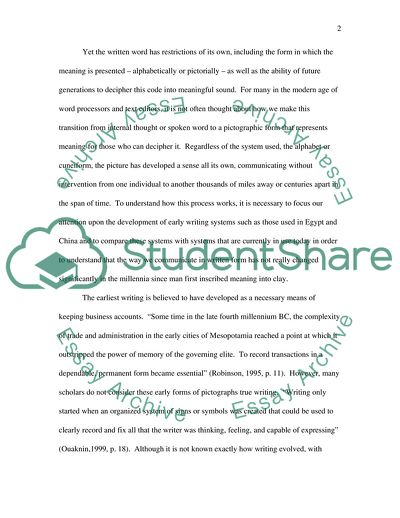Cite this document
(Pictographic Writing Systems in China and Egypt Assignment, n.d.)
Pictographic Writing Systems in China and Egypt Assignment. https://studentshare.org/history/1704008-pictographic-writing-systems-in-chinies-and-egypian
Pictographic Writing Systems in China and Egypt Assignment. https://studentshare.org/history/1704008-pictographic-writing-systems-in-chinies-and-egypian
(Pictographic Writing Systems in China and Egypt Assignment)
Pictographic Writing Systems in China and Egypt Assignment. https://studentshare.org/history/1704008-pictographic-writing-systems-in-chinies-and-egypian.
Pictographic Writing Systems in China and Egypt Assignment. https://studentshare.org/history/1704008-pictographic-writing-systems-in-chinies-and-egypian.
“Pictographic Writing Systems in China and Egypt Assignment”. https://studentshare.org/history/1704008-pictographic-writing-systems-in-chinies-and-egypian.


